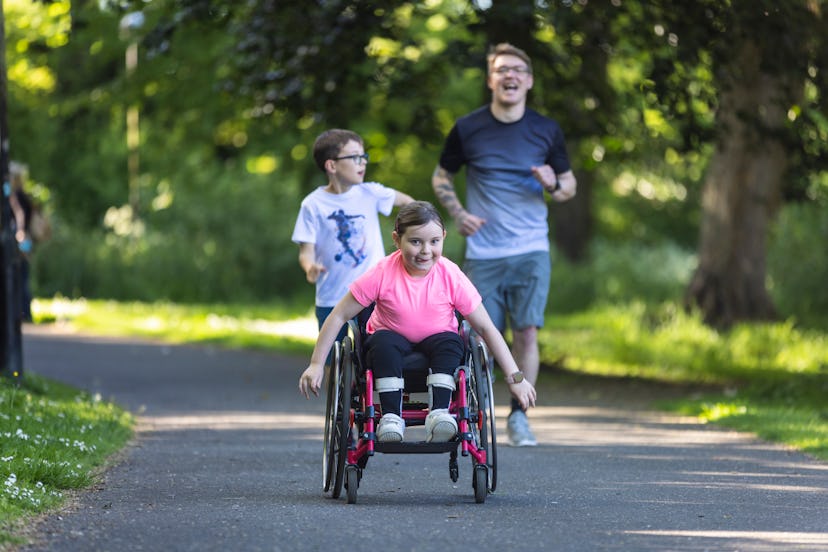Parents Who Raise Resilient Kids Make Sure They Are Plenty Active
This list of reasons kids should get adequate exercise continues to grow.

Physical activity is majorly important for kids' bodies and brains. But the stakes of not getting enough physical activity — the Centers for Disease Control and Prevention (CDC) recommends at least 60 minutes of moderate to vigorous activity for kids, per day — continue to rise, as new studies explore the many benefits of physical activity. Now, one recent study has found that when kids get appropriate exercise, they unlock one surprising mental health benefit: They’re more resilient to life’s challenges.
The study, conducted by researchers at the University of Basel in Switzerland, indicates that kids who reach the World Health Organization and CDC’s recommendation of an average of 60 minutes of moderate-to-vigorous physical activity (MVPA) per day — predominantly aerobic exercise — tend to cope better with stress.
Exercise experts consider activities like hiking, jogging, and biking faster than 14mph vigorous activities because of how much energy they burn. Biking at more moderate speeds, brisk walking, mowing the lawn, and playing pickleball, for example, are designated as moderate.
The researchers tracked the daily movement of 110 children between the ages of 10 and 13 for a week using wearable sensors. They then brought the kids into a lab on two separate occasions and asked them to complete one stressful task —preparing a presentation for a fictional jury in a short amount of time — and one non-stressful arithmetic-based task.
The researchers tested the kids’ physical stress by measuring the levels of cortisol in their saliva. Cortisol, a hormone released when people are under stress, is why many people experience decreased cognitive function when stressed, as it slows nonessential or harmful functions in fight or flight situations.
They found that kids who engaged in more MVPA had lower cortisol levels when attempting to complete both the stressful and the non-stressful tasks.
The researchers also documented each participant’s brain waves with an EEG and plan to analyze that data next to examine cognitive responses to the stress task.
Although there is a litany of cognitive and emotional approaches to raising resilient kids who can work through struggles and disappointments in a healthy manner, it’s interesting, albeit unsurprising, that data now backs adding physical components to the art of equipping kids to bounce back from life’s inevitable difficulties.
Unfortunately, though data continues to mount that kids should get more physical activity, the percentage of children in the United States that meet recommended thresholds is borderline abysmal. According to the CDC, just 24% of school-age children in the United States reach the 60-minute daily benchmark.
The path toward active and healthier American youth is multifaceted. On a systemic level, there’s some hope — an increasing number of school districts are expanding physical activity during the school day by making sure kids have adequate recess time, and others are requiring schools to set aside time each day for some type of physical activity like daily P.E.
Parents looking for easy opportunities to increase their children’s activity levels will find some low-hanging fruit available if they live within a walkable or bikeable distance from school. As Fatherly previously reported, kids who use active modes of transportation to get to school tend to do better in the classroom, as researchers contend that active commuting increases brain function.
And if all else fails, Pokémon Go! is still alive and well as a tech-forward opportunity for kids to get some steps in while scratching that screen time itch.